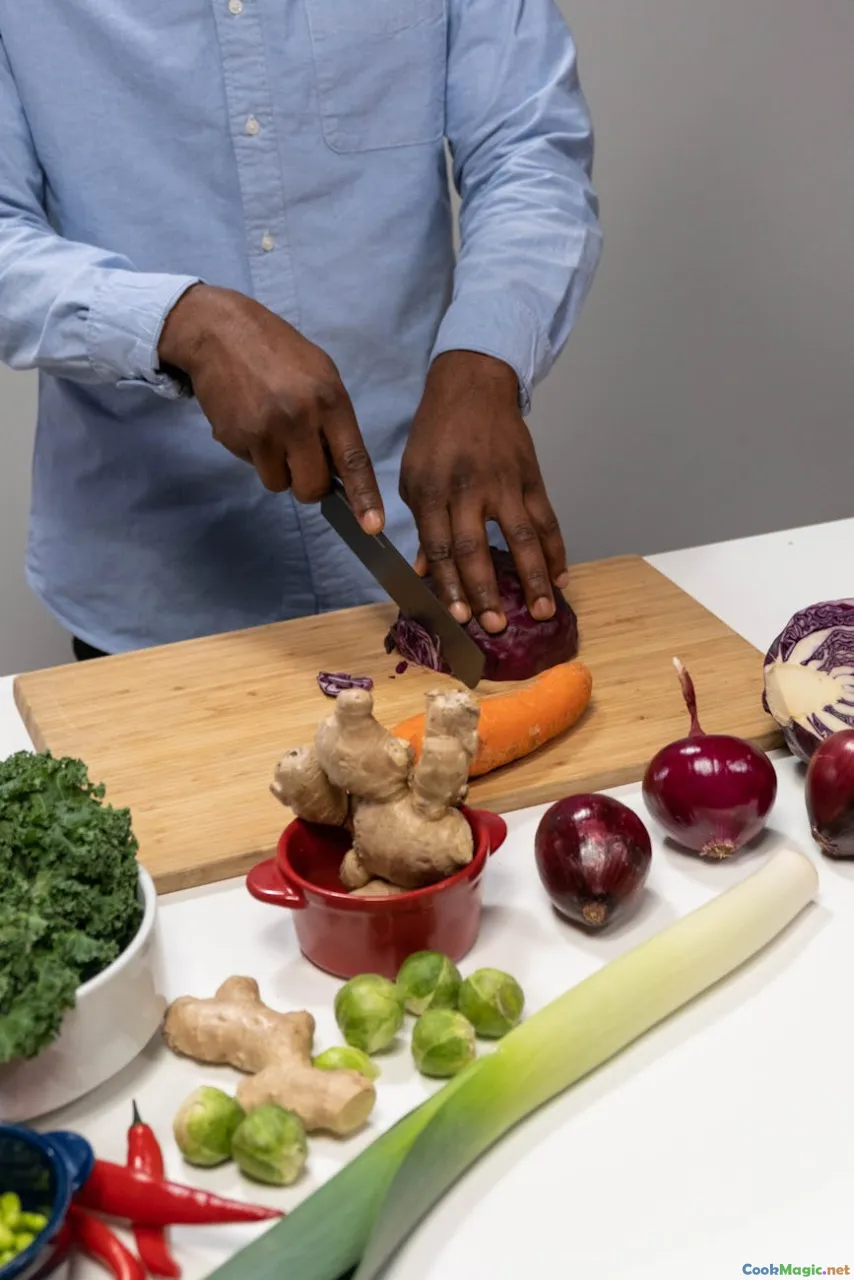Master the Art of Perfectly Chopping Onions
8 min read Unlock the secrets to perfectly chopping onions with expert techniques, ensuring safety, efficiency, and delicious results in your cooking. April 29, 2025 06:00
Master the Art of Perfectly Chopping Onions
Imagine standing in your kitchen, the aroma of freshly chopped onions filling the air—sharp, pungent, yet somehow inviting. Onions are the backbone of countless dishes across the globe, from the rich, caramelized sweetness in French onion soup to the fiery zest in Indian curries. Yet, despite their culinary ubiquity, many home cooks wrestle with the simple act of chopping them. Why is that? Perhaps it’s the fear of tears, the mess, or simply not knowing the best technique.
The truth is, mastering the art of chopping onions is more than just a skill—it's a gateway to elevating your cooking, understanding flavor layers, and gaining confidence in the kitchen. This article takes you beyond the basic dice, exploring the rich history, cultural significance, and sensory magic behind perfectly chopped onions. By the end, you'll not only know how to chop onions efficiently but also appreciate their vital role in the culinary world.
The Cultural and Historical Significance of Onions
Onions have been a staple in human diets for thousands of years, dating back to ancient civilizations. Archaeological evidence suggests that onions were cultivated as far back as 5000 BC in regions that are now Iran and Pakistan. Their widespread use across cultures—from the onion-laden dishes of the Mediterranean to the spicy relishes of Asia—speaks to their versatility and importance.
In Ancient Egypt, onions symbolized eternity due to their concentric layers, which represented life's cyclical nature. Ancient Greeks and Romans treasured onions not just for their flavor but also for their purported medicinal properties. In medieval Europe, onions were considered a health tonic, believed to ward off illnesses.
Culturally, onions hold emotional and social significance. Imagine bustling markets in Marrakech, where vendors display vibrant, glistening onions, or the rustic kitchens of Italy simmering with the aroma of sautéed onions and garlic. These humble bulbs have the power to evoke memories, connect generations, and tell stories of migration and tradition.
Why Perfectly Chopped Onions Matter
Beyond aesthetics, the way onions are chopped influences the final dish's flavor, texture, and aroma. Uniform pieces ensure even cooking, preventing some bits from burning while others remain raw. Proper chopping releases their natural sugars at a controlled rate, affecting caramelization and sweetness.
Moreover, the technique impacts safety and comfort. A secure, sharp knife and proper cutting methods reduce the risk of slips and tears—both literal and emotional. Learning to chop onions swiftly and safely transforms a tedious task into a satisfying part of cooking.
The Sensory Experience: Taste, Smell, and Texture
Onions contain sulfur compounds that, when sliced, react with enzymes to produce a tear-inducing gas. While this can be a nuisance, it also contributes to their pungent aroma and depth of flavor. When chopped finely and cooked, these compounds mellow into sweet, umami-rich notes.
The texture of chopped onions varies from translucent and tender when sautéed to crisp and pungent when raw. Visual appeal matters too—their layered structure and the way they catch light can make a simple dish look vibrant and inviting.
Essential Tools for Perfect Chopping
Sharp Knife
A razor-sharp chef’s knife is your most vital tool. It ensures clean cuts, safety, and efficiency. Regular honing and occasional sharpening keep your blade in top condition.
Cutting Board
Choose a sturdy, non-slip cutting board. Wooden or plastic boards work well; just ensure they are stable to prevent accidents.
Onion Holder or Claw
These tools help stabilize the onion and keep fingers safe, especially when working with large or hard onions.
Step-by-Step Guide to Chopping Onions
1. Prepare Your Workspace
Ensure your knife is sharp, your cutting board is clean and stable, and your onions are peeled.
2. Cut Off the Top and Root Ends
Slice off the stem end and the root end to create flat surfaces. This provides stability.
3. Halve the Onion
Slice the onion vertically from top to root, creating two halves.
4. Make Horizontal and Vertical Cuts
Place the flat side down. For diced onions, make horizontal cuts (not all the way through) then vertical cuts, maintaining even spacing.
5. Chop
Finally, slice perpendicular to your vertical cuts to produce uniformly chopped pieces.
6. Handle Tears
To minimize tears, chill the onion beforehand, cut near an open window or fan, and consider wearing goggles.
Tips for Efficiency and Safety
- Use a rocking motion with your knife, keeping the tip in contact with the board.
- Keep your fingers curled inward (claw grip) to protect your fingertips.
- Work slowly at first, then increase speed as you become more confident.
- Practice regularly—like any skill, muscle memory develops over time.
Personal Insights and Anecdotes
Having cooked in diverse kitchens—from bustling street markets in Thailand to serene farmhouses in Tuscany—I've learned that good technique begins with respect for your ingredients. I vividly remember the first time I managed to dice an onion without tears; the sense of accomplishment was exhilarating. Over time, I realized that mastering this simple skill not only improved my dishes but also deepened my connection to the food.
One memorable experience was preparing a traditional French onion soup. The onions, sliced uniformly and cooked slowly to caramelization, became sweet, sticky strands that infused the broth with rich flavor. That dish reminded me that precision in prep creates magic on the plate.
Final Thoughts: Turning a Basic Skill into an Art
Chopping onions might seem mundane, but it embodies the essence of culinary mastery—attention to detail, patience, and respect for ingredients. With the right tools, techniques, and mindset, you can transform this humble vegetable into the foundation of countless delicious dishes.
So, the next time you reach for an onion, remember: you hold the potential to elevate your cooking. Embrace the process, refine your technique, and savor the sensory journey that begins with a simple slice. Happy chopping!









